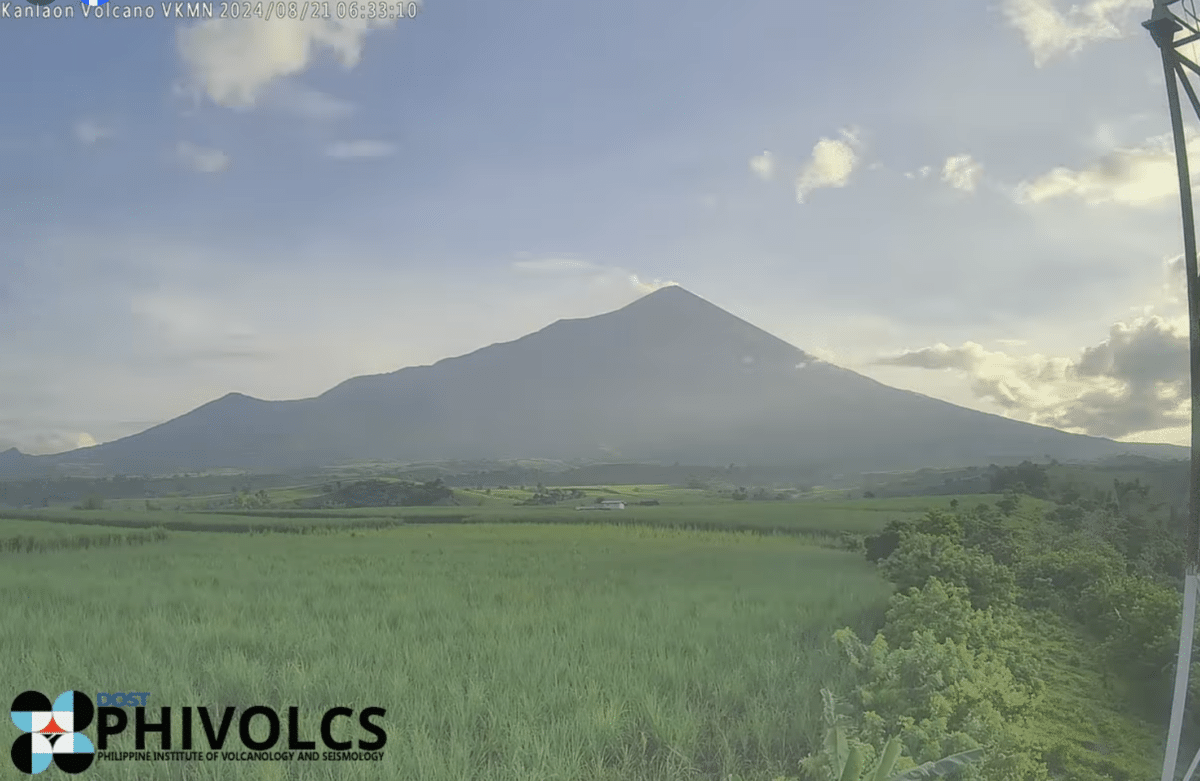
The Mansalano Observation station records the degassing of Kanlaon Volcano summit from 6:15 a.m. and 6:35 a.m. on Wednesday, August 21, 2024. —Screenshot from the Philippine Institute of Volcanology and Seismology/Facebook
MANILA, Philippines — Kanlaon Volcano released on Wednesday the second highest level of sulfur dioxide emission this year and since the gas monitoring began, the Philippine Institute of Volcanology and Seismology reported.
According to the state seismologist, the volcano emitted 6,720 tons of sulfur dioxide.
“Volcanic sulfur dioxide (SO2) gas emission from the summit crater of Kanlaon based on campaign Flyspec measurements today, 21 August 2024, reached 6,720 tonnes/day. This is the second highest emission from the volcano recorded this year and since instrumental gas monitoring began,” Phivolcs said in its 5 p.m. advisory.
READ: Kanlaon volcano erupts, spews kilometers-high plume
It had been releasing an average rate of 1,273 tons per day of sulfur dioxide prior to the June 3 eruption. However, it has since then increased to an average of 3,247 tons per day.
On August 13, the volcano spewed 7,307 tons of sulfur dioxide, the highest recorded emission level.
READ: Mt. Kanlaon emits record 7,307 tons of SO2; Alert Level 2 remains
A total of 15 volcanic-tectonic earthquakes were also recorded by the Kanlaon Volcanic Network.
“The current parameters warn of shallow magmatic processes beneath the volcano are actively driving unrest, causing persistent and increasing concentrations of volcanic gas emission, persistent volcanic earthquake activity and swelling of the edifice,” the advisory added.
Phivolcs said that Kanlaon Volcano is still under Alert Level 2, which means that “there is a current unrest driven by shallow magmatic processes with increased chances of leading to explosive eruptions or even hazardous magmatic eruption from the summit crater.”
The public is reminded to avoid entry into the four kilometer-radius Permanent Danger Zone where activities such as pyroclastic density currents, ballistic projectiles, rockfall and others could happen.
Pilots are also advised to avoid flying near the volcano’s summit while communities nearby that have experienced lahars and mudflows are told to take precautionary measures when heavy rainfall casts over the volcano.